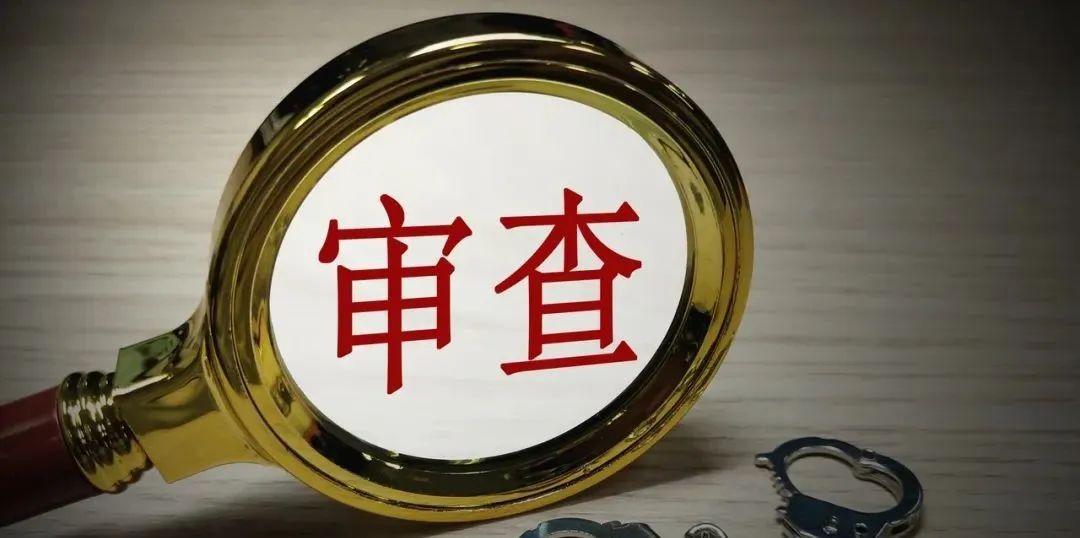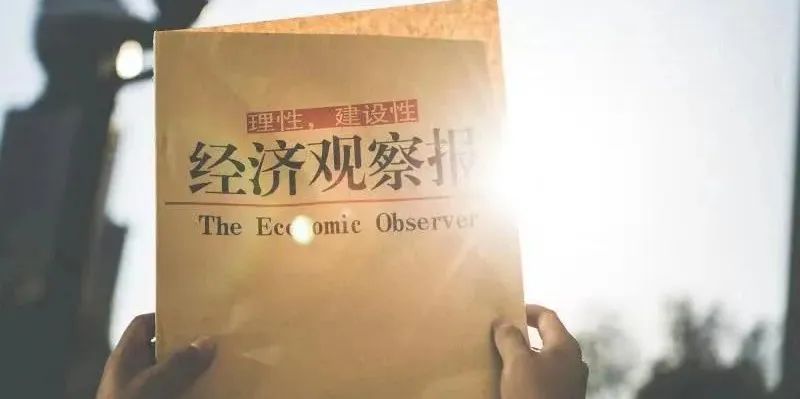The dilemma of edible oil market behind Indonesia’s "oil ban"
Original Chen Shan Economic Observer

On April 22nd, local time, Indonesian President Joko announced that the export of palm oil and related raw materials would be suspended from the 28th. Indonesia’s "oil ban" immediately triggered a huge earthquake in the global edible oil market, and the international oil price rose sharply. For China, whose palm oil supply is almost 100% dependent on imports, how much impact will the Indonesian oil ban have?
Author: Chen Shan
Seal the picture: the creativity of the worm
guide reading
||| After the ban on Indonesian palm oil export, the price of Malaysian palm oil will definitely rise sharply. In this case, only when the price of palm oil in China rises synchronously can the import of enterprises be stimulated to ensure the market supply.
In fact, the import cost of palm oil in China is upside down, and the price of palm oil has surpassed that of soybean oil. It is rare in history that there has been such a long-term deep upside down. This year, because the price of palm oil has risen too fast and too high, soybean oil has replaced palm oil.
3 || From the price point of view, due to the high external dependence of vegetable oil in China, palm oil is 100% and soybean is 85%, the higher external market price will increase the cost of oil arrival in Hong Kong, thus raising the domestic vegetable oil price, and the short-term vegetable oil price will still be strong.
As the world’s leading producer and exporter of palm oil, Indonesia has recently suffered from the crisis of edible oil shortage.
On April 22nd, local time, Indonesian President Joko announced that the export of palm oil and related raw materials would be suspended from April 28th. In fact, 60% of the world’s palm oil is produced in Indonesia, but recently, the supply of edible palm oil has been insufficient and the price has risen in many places in Indonesia. It is reported that this move is to cope with the shortage of palm oil supply in Indonesia and prevent the price from continuing to rise.
Indonesia’s "oil ban" immediately triggered a huge earthquake in the global edible oil market, and the international oil price rose sharply. The price of soybean oil futures on the Chicago Mercantile Exchange (CBOT) soared to a record high of 83.21 cents, which drove the prices of the three major domestic oils to a record high. The data shows that since the beginning of this year, the international prices of soybean oil and palm oil have increased by nearly 50% and 40% respectively.
For China, whose palm oil supply is almost 100% dependent on imports, how much impact will the Indonesian oil ban have? Will the cooking oil crisis that is being staged in many countries be transmitted to China?
High dependence
High dependence In fact, almost all palm oil in China is imported, and it is highly dependent on Indonesian palm oil. At the same time, China is still the second largest palm oil importer and the third largest consumer in the world.
Palm oil is widely used in food industry and chemical industry, especially in instant noodles, puffed food, pastry and other processed foods. It is the second largest vegetable oil consumption in China after soybean oil. In 2019, China’s palm oil consumption exceeded 6.4 million tons, of which 60% came from Indonesia and 30% came from Malaysia. These two countries are also the largest palm oil producers in the world.
YiBo, a researcher of Founder Mid-term Futures, told the Economic Observer that after the ban on palm oil export in Indonesia, the demanding countries will have to turn to Malaysia, Argentina and other major vegetable oil exporters. However, due to the difficulty of other countries to make up for the reduction in Indonesia’s vegetable oil export, the effective supply in the market will be reduced, which will make the global vegetable oil supply tight, and suppliers may have a certain reluctance to sell and wait for growth, which will lead to the increase in the prices of palm oil and alternative oils. "China’s external dependence on palm oil is 100%, and soybean’s external dependence is over 85%. The increase in the price of oil and fat in the international market will increase the cost of oil and fat in China, which will lead to the increase in the price of palm oil and edible oil in China."
Zhou Shiyong, president of Beijing Heyirong Investment Group Co., Ltd. (referred to as Heyirong Group), bluntly said in an interview with the reporter of Economic Observer Network, "As an enterprise with an annual sales volume of 1 million tons of palm oil, the price fluctuation of palm oil has a great impact on the company. Domestic palm oil use has declined. "
It is reported that Heyirong Group is a diversified comprehensive group with investment, production and sales of bulk edible oil as the leading industry. Its products are mainly palm oil, soybean oil, rapeseed oil and cotton oil, and its Yizheng Fangshun Grain and Oil Industry Co., Ltd. became the designated delivery warehouse of palm oil in Dashang in 2007.
Zhou Shiyong believes that the ban on Indonesian palm oil exports will definitely lead to a sharp rise in Malaysian palm oil prices. In this case, only the simultaneous increase in China palm oil prices can stimulate enterprises to import and ensure market supply.
It is understood that since November last year, many palm oil producers in Indonesia have increased their exports in order to obtain higher profits, but this has also led to insufficient domestic supply in Indonesia. In January this year, the Indonesian government has restricted some export activities and provided cash subsidies to low-income groups. However, these measures have not effectively alleviated the supply shortage, and the price of palm oil is still rising. At present, the average retail price of edible palm oil in Indonesia is 26,000 Indonesian rupees per liter, which is about RMB 12 yuan, with an increase of over 40% during the year.
It is reported that in Indonesia, palm oil is the main local edible oil variety, while the export products are more widely used, including food processing, chemicals and biofuels.
Will Indonesia palm oil ban be implemented for a long time?
YiBo believes that this policy will not be implemented for a long time for the following reasons: First, Indonesia’s palm oil production is far greater than its demand. In 2021, Indonesia’s palm oil production is 33.67 million tons, far greater than its demand of 15.28 million tons, and it has palm oil export demand. Second, Indonesia’s DOM policy on palm oil and coal export ban policy were implemented in a short time, and export policies were changed frequently. Third, palm oil is one of Indonesia’s major export products. Therefore, to sum up, Indonesia will resume its export once again after the domestic edible oil price falls effectively. It is only speculated that tariffs may continue to be raised from the perspective of curbing domestic vegetable oil prices.
Zhou Shiyong also believes that Indonesia’s palm oil export ban will not be implemented for a long time. "Indonesia’s palm oil tank capacity is limited. If it is not exported for a month or two, the tank will be full." Zhou Shiyong believes that the main purpose of Indonesia’s ban is to increase domestic inventory supply and suppress domestic oil prices.
Meyer of Platts Energy said, "In view of Indonesia’s dependence on palm oil exports, a long-term ban may seriously damage Indonesia’s economy. In addition, this is not the first time that Indonesia has announced similar actions after the outbreak of the Russian-Ukrainian conflict. This is only to quickly reverse the situation. " Meyer added that the ban scheduled to start on April 28 may eventually lead to an increase in export tariffs, but it will not lead to a complete closure of exports. In addition, Meyer also pointed out that there is no shortage of palm oil supply in Indonesia, and the supply of palm oil in 2021/2022 is actually higher than last year, and it is much higher than the historical level.
price distortions
In fact, the import cost of palm oil in China is upside down, and the price of palm oil has surpassed that of soybean oil. It is rare in history to have such a long-term deep upside down. Judging from the domestic futures market, as of press time, the main contract of soybean oil was 11,306 yuan/ton, and the main contract of palm oil was 11,560 yuan/ton.
Zhou Shiyong told reporters that palm oil is usually cheaper than other vegetable oils, and it is often used to replace other oils, and there are few cases where other oils replace palm oil. However, because the price of palm oil has risen too fast and too high this year, soybean oil has replaced palm oil. "In other words, the use of palm oil has fallen sharply, and domestic industrial enterprises that are basically just needed are still using it." Zhou Shiyong said.
Zhou Shiyong said that the price of palm oil is already at an all-time high, which has a great impact on production and operation enterprises. Especially the impact on the domestic food industry is very obvious. "Palm oil is an important raw material. For food production enterprises, there is a big problem in cost control."
The reporter noticed that the rising prices of raw materials such as palm oil have been transmitted to the middle and lower reaches. Since the beginning of this year, instant noodle giants including Master Kong and Uni-President have raised prices. Guotai Junan once pointed out in the research report that as of February 14, 2022, the price of palm oil increased by 44.6% year-on-year. It is expected that the adverse impact of changes in raw material prices on Master Kong will last at least until the second half of 2022.
According to Zhou Shiyong, due to the rising prices of edible oil and flour, the operating rate of small and medium-sized food enterprises has been very low this year, and small and medium-sized enterprises are basically in a state of semi-suspension.
After the historical high of palm oil, oil operators are also more cautious, basically keeping a small inventory in turnover. At the same time, the epidemic has also restricted the consumption side, and oil operators generally hold a wait-and-see mentality.
"Our current palm oil sales are mainly to protect our just-needed customers, because the import price is very serious now, about 1000 yuan/ton, and importers can’t import it, because imports are facing losses. In this case, they can only import in small batches according to the needs of downstream just-needed customers, and it is difficult to have large-scale and continuous purchases as before." Zhou Shiyong said.
So, who is the driving force behind the historical high price of palm oil?
"The supply of palm oil in food has decreased, leading to high prices." In Zhou Shiyong’s view, first, the supply of major producing areas in Indonesia and Malaysia has declined. In the past two years, under the influence of the COVID-19 epidemic, the shortage of labor in the main producing areas and the untimely harvest of palm fruit led to a decline in output; At the same time, due to the reduction of fertilization and watering during the epidemic, the yield also declined. Second, in 2019, the Indonesian government launched the B30 plan for biodiesel, stipulating that 30% of palm oil biofuels must be blended into diesel, which increased the amount of palm oil converted into biodiesel.
Edible oil crisis
It is worth noting that the data released by the Food and Agriculture Organization of the United Nations on April 8 showed that the vegetable oil price index increased by 23.2% in March. Affected by the COVID-19 epidemic, extreme climate and the conflict between Russia and Ukraine, the international edible oil price has soared, and many countries, including Britain and Germany, even have a shortage of edible oil, and many places are experiencing an edible oil crisis.
The reporter learned from many interviews that the formation of the edible oil crisis is mainly affected by four factors.
First, La Nina phenomenon has led to a sharp reduction in both Canadian rapeseed and soybean production in South America, and the global inventory consumption ratio of oilseeds is in a historically low region. Second, the shortage of labor supply in Malaysia has led to a slow recovery of horse palm production. Third, the geopolitical conflict between Russia and Ukraine has greatly hindered the export of vegetable oil in the Black Sea region. The export volume of vegetable oil in the Black Sea region, including sunflower oil and rapeseed oil, is about 1.2 million tons per month, which has aggravated the global shortage of vegetable oil. It is reported that Ukraine and Russia supply 80% of the world’s sunflower oil exports, while due to the conflict between Russia and Ukraine, Ukraine reduced its sunflower oil exports by 95%, while Russia began to export sunflower oil on April 15th.
In addition, under the background of rising crude oil prices, the profit of biodiesel has improved, and the dispute between edible oil and renewable fuels has also become one of the driving forces for the rise of edible oil prices. Since the beginning of this year, the price of crude oil once exceeded $100/barrel. Palm oil is the best main raw material for biodiesel, and its price is also positively correlated with the price of crude oil. If the price of crude oil rises, the usage of biodiesel will increase, thus increasing the industrial demand of palm oil.
Compared with the violent fluctuation of global edible oil price, the domestic edible oil market has the characteristics of less price fluctuation due to the adjustment of the price (soybean oil) and dumping. According to the data from the National Bureau of Statistics, the price of edible oil in China rose by 6.9% in 2021, far lower than the 65.8% increase of global edible oil. In 2022, although the domestic edible oil price has been rising for several weeks, the overall range is not large.
Will the overseas cooking oil crisis be transmitted to China?
"High overseas prices will definitely be transmitted." According to Zhou Shiyong, judging from the three major consumption oils in China, rapeseed oil and palm oil have increased obviously, while soybean oil has also increased passively. In the case of a general increase in overseas edible oil, there is bound to be a cost-driven increase.
YiBo also believes that from the price point of view, due to the high external dependence of vegetable oil in China, the external dependence of palm oil is 100% and that of soybean is 85%, the higher price in the external market will increase the cost of oil arriving in Hong Kong, thus raising the domestic vegetable oil price, and the short-term vegetable oil price will still be strong.
However, in terms of supply, YiBo said that from April to June, 2022, China’s soybean arrived in Hong Kong with an average of more than 8 million tons per month, and the national reserves were intermittently dumped, which was relatively sufficient in the short term, and in the medium and long term, Indonesia’s export ban would not be implemented for a long time. Once Indonesia’s palm oil exports returned to normal and palm oil itself entered a production increase cycle, the tight supply pattern of vegetable oil would gradually ease, and the price would be expected to fall back at a high level.


Looking at the headlines | Boao faces four major challenges

Tian Huiyu, the former president of China Merchants Bank, was investigated for serious violations of the law. Recently, many former CCB staff members have been investigated one after another.

We remember-21 years written in the Economic Observer
Original title: "The dilemma of edible oil market behind Indonesia’s" oil ban ""
Read the original text